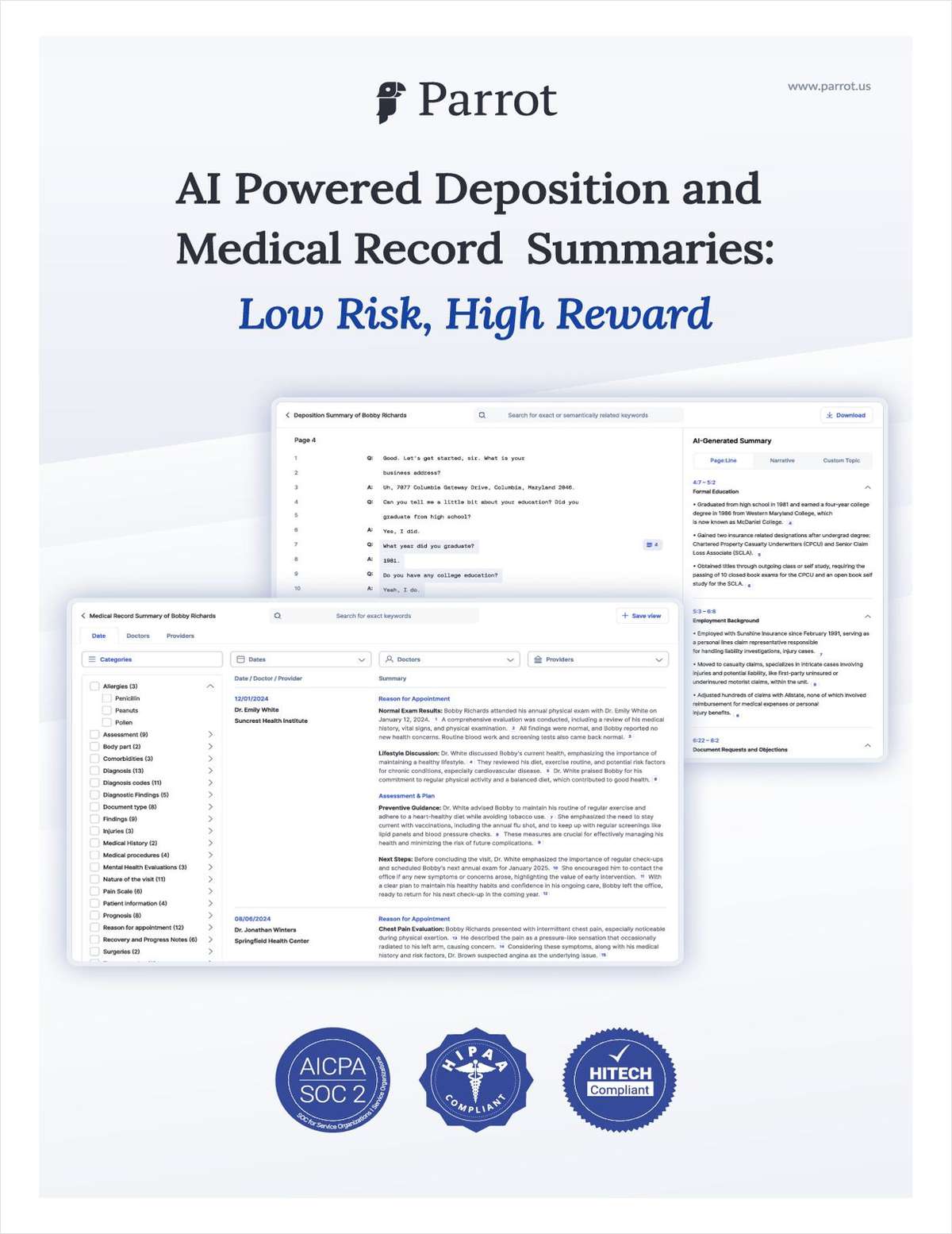More from ALM
Resources

The Power of Online Reputation Management For Attorneys: A Critical Tool For Law Firms in 2025
Brought to you by Erase.com
Download Now

The Role of Evolving Support Structures in Optimizing Legal Talent
Brought to you by BigHand
Download Now

Corporate Monitorship Advisory Services
Brought to you by HaystackID
Download Now

AI-Powered Deposition and Medical Record Summaries: Low Risk, High Reward
Brought to you by Parrot
Download Now



